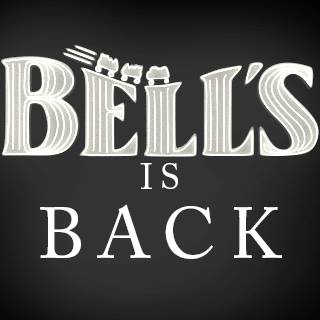Tulsa: August 2013 Archives
An interactive demographic map -- called the "Racial Dot Map" -- is making the rounds. The map is by Dustin A. Cable, Weldon Cooper Center for Public Service at the University of Virginia. Each dot on the map represents one person from the 2010 U. S. Census, located within the census block and color-coded according to the self-selected racial and ethnic categories listed on the census form.
Overlooking the racial coding for a moment, the map beautifully depicts the great urban conglomerations and the strings of settlement along the highways that cross the sparsely-settled Great Plains. The voids on the map include the Great Lakes, the Mississippi River, the mountain ridges of central Pennsylvania, the Okefenokee and the Everglades, and the Sierra Nevada. Zooming in on Tulsa, you can see the Bird Creek floodplain that divides Owasso and Collinsville from Tulsa and its adjoining cities and towns. It's a negative of what you would see with a nighttime satellite view.
This Land Press editor Michael Mason posted a link to the map on Facebook with the comment, "Ugh. This just-released map reveals Tulsa's racial divide."
Zoomed out, the map shows areas of predominance, with the highest concentration of African-Americans west of US 75 and north of Edison St. Other areas show concentrations of Hispanics. The area north of 11th Street and east of US 75 appears to be the most evenly mixed.
But zoom in further, and you'll see dots of every color in every part of every square mile of the city. A study of the 2000 census showed that 64% of the African-Americans in the Tulsa metro area lived on blocks that were less than 80% black. (That link also has stats on racial integration -- the lack thereof -- in the 1960 census, and a map showing the concentrated area in which 91% of African-Americans lived.)
That study hasn't been updated yet for the 2010 census, but some enterprising amateur demographer could download the data from the website and run the numbers. I suspect that the long-term trend of diversification has continued, with more members of racial and ethnic minority groups living in majority / majority neighborhoods.
What I wrote about that earlier study bears repeating:
So we've gone from over 90% of blacks living in a small part of the city in 1960 to living all over the metro area -- 64% outside of predominantly black areas -- in 2000. That seems like progress to me, but the authors of the research don't rank Tulsa as significantly integrated (see their maps of Tulsa) because there are so few blocks on which the population is at least 20% black and at least 20% white. In a city where the overall black population is less than 20%, that doesn't seem like a good measurement of integration.Of course, geographical integration isn't necessarily a good measure of social integration either, as we tend to connect with people we know from church, school, and work and may not spend much time with our own neighbors.
After the jump, snapshots of Tulsa on the racial dot map at different zoom levels.
 The Bell family began building small kiddie rides in a garage at 8th and Lewis in 1951, gradually building a legendary amusement park on the west end of the Tulsa County Fairgrounds. The fun came to an end in 2006, when the Tulsa County Public Facilities Authority (the Fair Board) made the rash decision to refuse a lease renewal to Expo Square's longest-standing and most lucrative tenant.
The Bell family began building small kiddie rides in a garage at 8th and Lewis in 1951, gradually building a legendary amusement park on the west end of the Tulsa County Fairgrounds. The fun came to an end in 2006, when the Tulsa County Public Facilities Authority (the Fair Board) made the rash decision to refuse a lease renewal to Expo Square's longest-standing and most lucrative tenant.
Hoping for the future, the Bells put the ride equipment into storage. For a year or so, the third generation of the Bell family has been running several small rides in connection with Swick's Flea Market at 5802 W. 51st Street, west of Tulsa. They have plans to begin reassembling larger rides for big kids and adults; the Tilt-A-Whirl is in progress. A miniature golf course is ready for assembly.
For the really big rides, you need more than just level ground. You need concrete footings and steel structures and other infrastructure that Bell's had to leave in place. All that will have to be re-created, and there's a cost to reconditioning and reassembling each ride. A sudden resurrection would have been exciting but would have been unlikely even in a healthy financial climate. In a sense, Robby Bell is following the same path that his grandfather and father blazed -- slow and steady expansion -- but with the advantage this time around of already owning the ride equipment.
The new Bell's has a website -- bellsisback.com -- with info on hours, location, and answers to frequently asked questions. Weather permitting, the rides will be running every Saturday (10 a.m. - 5 p.m.) and Sunday (1 p.m. - 5 p.m.). Rides are $1 each. They've also got a Bell's Facebook page and a donation page where you can contribute to speed up the process of bringing back the old rides.
Here's Robby Bell talking about the current state of the park and his near-term and long-term plans:
This is a timely development, as my youngest is about to outgrow the next-nearest place to ride rides, the Bartlesville Playground (aka Kiddie Park). We made our annual pilgrimage last night, and the seven-and-a-half year old, who has sprouted by several inches in the last year, was too tall to ride the bumper cars, too tall for everything except the biplanes and the pirate ship and the six rides that even grown-ups can ride (Little Dipper roller coaster, carousel, train, Aquarius spinning barrels, turtles, and trucks).